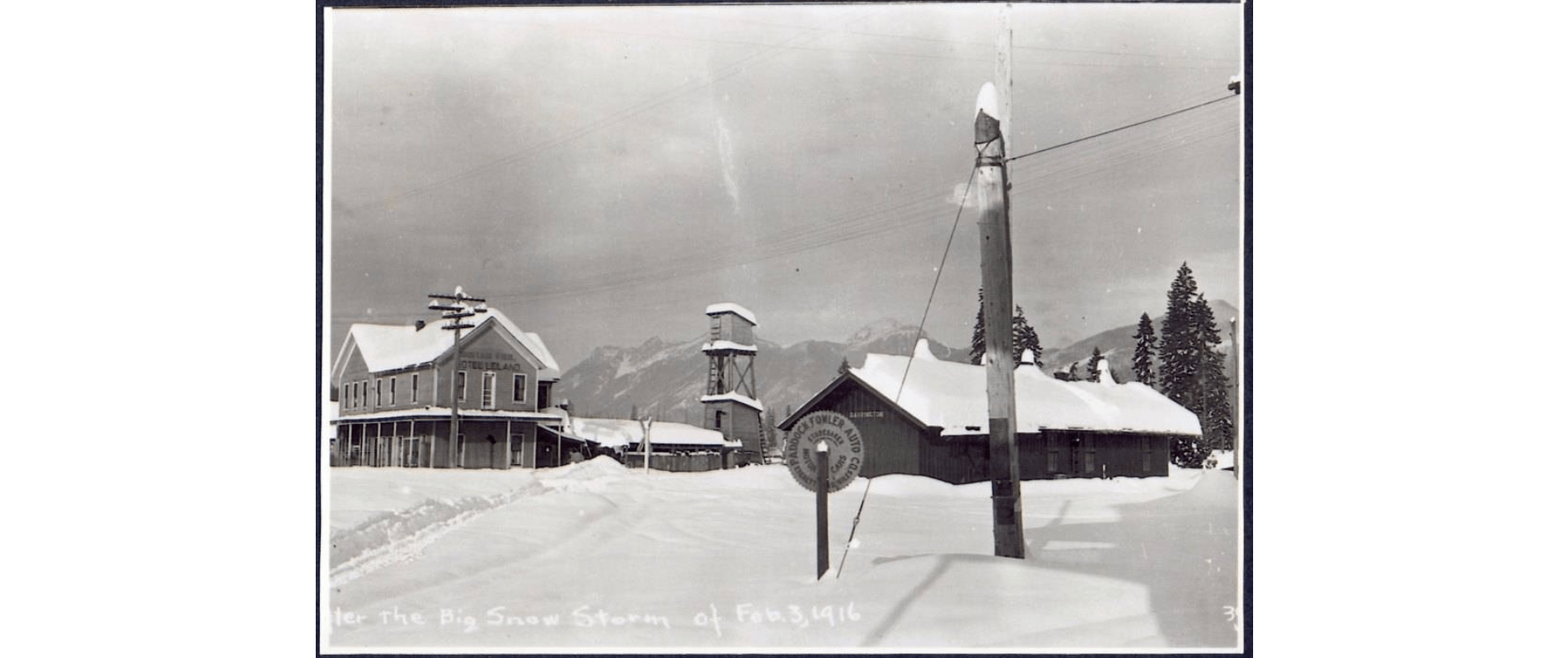
On January 31, 1916, snow began falling across Puget Sound on ground that had been snow-packed since December 31, 1915. Snow continued to fall for three days. Edmonds reported 25 inches of snow fall, Everett 30 inches, and Seattle 21.5 inches in one 24 hour period. The Stillaguamish River froze all the way across; a church in Granite Falls fell beneath the snow; and in Seattle, the St. James Cathedral dome collapsed.
Even the Great Northern train headed to Seattle stalled at Mukilteo until the tracks could be plowed. Schools and businesses closed. According to the February 4, 1916, edition of The Tribune-Review published in Edmonds, the only people doing business were the fuel dealers and they were hampered by impassable roads. The newspaper said suffering caused by the snow was greater in the large cities of Seattle, Everett and Bellingham than it was in smaller places such as Edmonds, because fuel was in greater abundance outside the cities.
This photo of the Darrington train depot and the Hotel Leland was taken by W. Ward Woodward on February 3, 1916, and is courtesy of the Darrington Historical Society. Mr. Woodward’s photo supports The Tribune-Review’s assertion in its February 4, 1916, front page article on the snowfall: “This proved without doubt that the man who last summer said it never snowed on Puget Sound is an unmitigated liar.” The unmitigated liar was not named.
The Tribune-Review characterized the winter of 1916 as the worst ever known on Puget Sound. The Western Regional Climate Center (WRCC) lists the snowstorm of 1916 as number nine among the top 10 weather related events to impact Washington in the 1900s. According to WRCC, the storm dropped from two to four feet of snow and winds created snow drifts up to five feet across Puget Sound.
Mr. Woodward’s photo captures the beauty and stillness of a great snowfall’s aftermath.
To view more photos from our past, visit our online historic photo archive.

